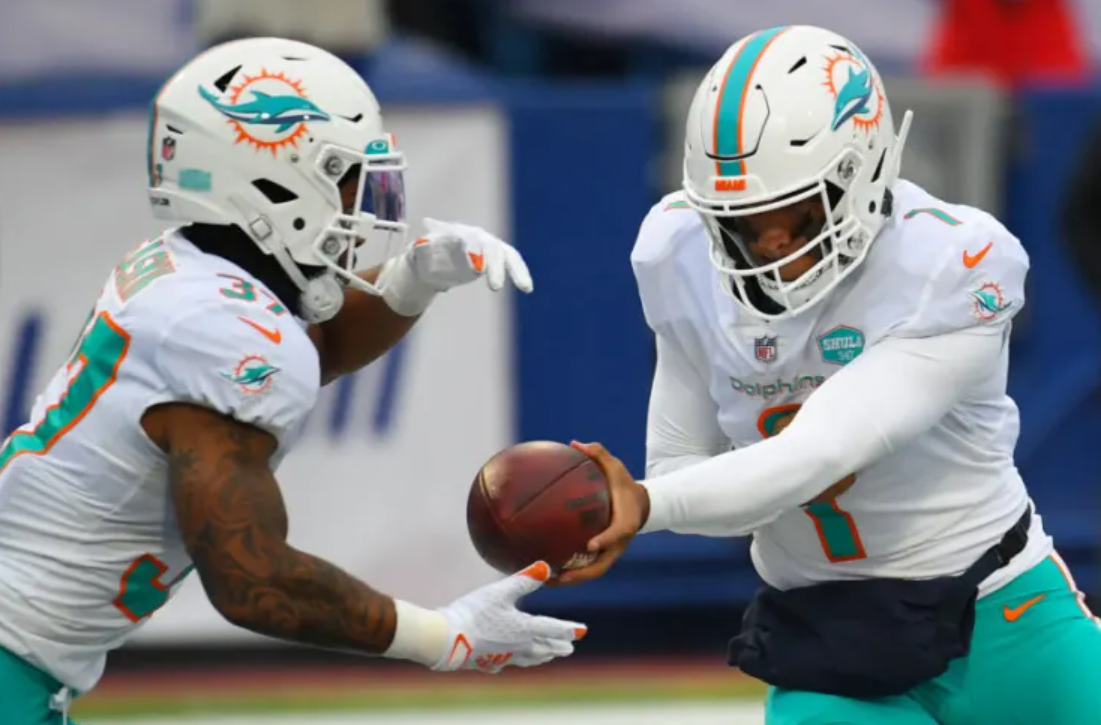Does running the ball set up the pass?
Running the ball to set up the pass is an age-old adage where your father and grandfather told you how to play football, but does running the ball really set up the pass?
Traditionally, when an offense executes a successful run for a significant chunk of yardage, an opposing defense will attempt to compensate by bringing additional defenders into the “run box.” The more bodies in the way of the run, the more likely it is for the run to be held short.
However, if more defenders are in the box, that means there are fewer players to defend passes away from the box, so the passing game has greater opportunity to get the ball further down the field.
The NFL evolves every decade moving onward towards something unique but building on basic concepts. We’ve witnessed the fall of the I-form power football in the ‘70’s, to rise of the West Coast offense in the ‘80’s, Run ‘N Shoot and K-Gun in the ‘90’s, Spread and Shotgun offenses in the early 2000’s to the RPO revolution in the 2020’s.
Ultimately, this has come as a result of the NFL’s purposeful rule changes and schematic breakthroughs that have led to its desired impact: more touchdowns. In turn this led to running the ball much less.
EPA on running the ball to set up the pass
A study done by Sean Clements, who is now a data analyst for the Baltimore Ravens, found that establishing the run early in NFL games does not open the passing game later in games.
Through a boxplot Clements made, it’s found that there is little correlation between running the ball early and at a high volume increases the yardage obtained on passing plays. The next emphasis is through EPA, expected points added. Basically, it measures the expected points of a play.
In a graph made by Ben Baldwin, the number of expected points decreases as the number of rushing attempts increases. Contrary to the belief running the ball will help to set up the pass and score.
If that were the case, then we would expect to see higher EPA as the number of rushing attempts increases.
How the modern era has discontinued running the ball to set up the pass
From 2015-2020 passing on first down has averaged a 7.6 YPA, yards per attempt, while running the ball gained 4.3 YPA.
Per sharp football stats, 30.4% of pass attempts on first down have ended up moving the chains. However, only 12.8% of running plays have picked up another first down. In 2020, NFL teams ran the ball on 50.3% of their first-down plays in 2020 and passed the ball on only 49.7%.
In 2021, NFL offenses averaged 7.4 YPA passing on first down compared to 4.2 YPA rushing.
Even the most run-heavy teams like the San Francisco 49ers and Tennessee Titans had higher YPA’s on first down compared to running the ball. San Francisco had an 8.9 YPA passing and 4.4 YPA rushing. Tennessee had 7.2 YPA passing and 4.2 YPA rushing.
Yet, 20 of 32 NFL teams, run the ball on first down gaining minimal yards compared to easily moving the chains to score. So what gives?
How two-high coverages has stopped running the ball to set up the pass
As a result of the modern NFL, many offenses are trigger-happy and defenses have had to respond with swift actions.
Defenses have adapted as time has passed. This time to coverages that include a large base of two-high safety shells. Two-high coverage means both the strong safety and free safety defend the deep end of the field, with each responsible for a section that runs to each boundary.
Thus leaving the middle of the field open, the main purpose of two-high is to prevent explosive plays in the deep third of the field and not allow big plays.
Some NFL offenses and high-profile quarterbacks like Patrick Mahomes have struggled against two-high coverage early on because they struggled to take what the defense gives them.
In 2018, the highest amount of two-high looks faced by any quarterback in the league was 42%. Eight weeks into the 2021 NFL season, only five teams faced two-high safeties less than 40%.
The key to beating two-high coverage? Running the ball. Two-high is not the perfect scheme to use a majority of the time as yards can be gained in the intermediate passing game and the running game.
The side effect of playing two high safeties to defend the pass is that it can leave you -1 defender against the run.. pic.twitter.com/mZONejCNCA
— Erik Turner (@ErikJTurner) February 2, 2022
Due to the nature of defensive backs lined up well outside the box, offenses often have a light defensive body count in the box to go against. This opens up numerous lanes for running backs.
How passing the ball has set up the run
Running the ball does keep the defense honest and it can be noted on second and third down. YPA on rush attempts increases to 4.4 on second down and 4.5 on third down. The success rate of it gaining five or more yards is 50% on second down and jumps to 53% on third down.
Passing on second down yields a 6.9 YPA with a 47% success rate, on third down passing results in 7.2 YPA with a 37% success rate. First down has become the most successful passing down to move the chains and get drives started for offenses with a 54% success rate.
The most successful offenses in the NFL have potent passing attacks and have the most success by passing the ball on first down and converting it five-plus yards or past the sticks. 
First Down situation Pass: Run Ratios
Buffalo, San Francisco, Green Bay, Cincinnati, and the Los Angeles Rams all have 8 or more yards per attempt passing coupled with being over a 54% success rate. Respectively, each team’s YPA on running the ball increases on 2nd and 3rd downs. 
Second and Third down Pass: Run ratios
As the NFL continues its passing revolution, gone are the days of running the ball to set up the pass. With the league running two-high shells almost 50% of the time, the NFL offense has adjusted to throwing the ball more on early downs to gain more yards. Thus, able to run the ball effectively when needed to be.
***This article was originally published on the ATB Network by Hussam Patel***
Hussam Patel is a Miami Dolphins contributor and Lead NFL Draft analyst at Five Reasons Sports Network, Director of Scouting at PhinManiacs and Editor at Dolphins ATB. Follow him on Twitter at @HussamPatel




Leave a Reply
Want to join the discussion?Feel free to contribute!